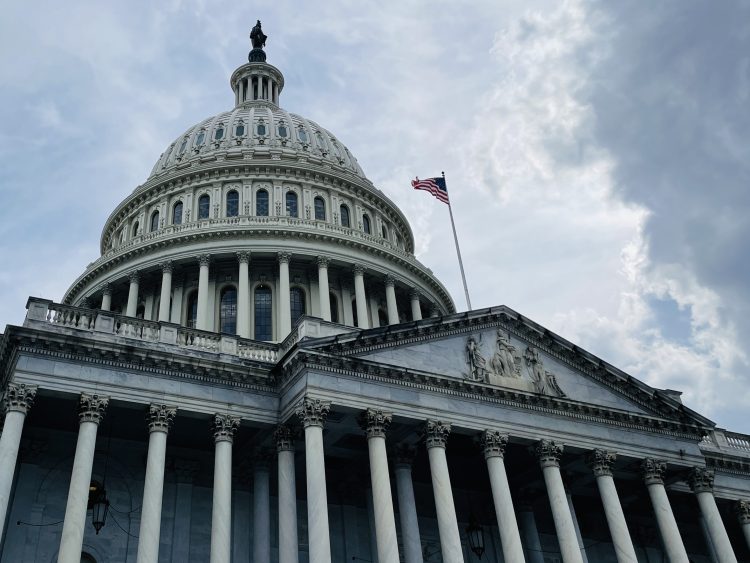If the House-passed $9.4 billion dollar rescissions package canceling funding for foreign aid and public broadcasting is approved by the Senate, it will mark the first time in a quarter century that a President has successfully rescinded funds through the Impoundment Control Act of 1974 (ICA). Under the ICA, the President can temporarily withhold funds and request that Congress reduce or cancel those funds for the fiscal year. Top Trump administration officials have signaled that this rescissions package is only one piece of the President’s larger impoundment plan, so what is impoundment and how does the ICA work?
Impoundment has no statutory definition, but the Government Accountability Office (GAO), the organization charged with impoundment oversight and enforcement by the ICA, states it is “any action or inaction by an officer or employee of the federal government that precludes obligation or expenditure of budget authority.” In other words, impoundment is the withholding of congressionally appropriated funds from their designated purpose. Article 1 Section 9 of the Constitution grants Congress the power of the purse (“No Money shall be drawn from the Treasury, but in Consequence of Appropriations made by Law”).
Presidents have impounded funds infrequently and in small amounts throughout the history of the United States, mostly in consultation with Congress for noncontroversial reasons. The use of impoundment reached its peak under President Richard Nixon. Impounding billions of dollars across several agencies, the Nixon administration claimed that it was their right to do so under executive authority in the face of rising spending.
In response, Congress passed the Impoundment Control Act of 1974 (the ICA). While not a new restriction on impoundment, under the assumption that it was already unconstitutional, the ICA provided a formal process for the President to request adjustments to congressional spending. Legal experts viewed the ICA as actually conferring some limited statutory power to impound funds as opposed to restricting existing legal authority to impound.
Who is Impounding and How?
The ICA identifies two types of impoundments, deferrals and rescissions. Each is a distinct type of impoundment, but both require the President to send special messages to Congress detailing what funds will be impounded and a justification for the impoundment.
Deferrals: A deferral is a temporary withholding of funds from expenditure during a certain fiscal year. It can be used by the President or an executive agency for specific, non-policy reasons as they are outlined in the ICA:
- to provide for contingencies;
- to achieve savings made possible by or through changes in requirements or greater efficiency of operations; or
- as specifically provided by law
Within deferrals, there also exists the “programmatic delay” – an agency taking reasonable and necessary steps to implement a program or activity, but the obligation or expenditure of funds is unavoidably delayed. This provision is not outlined in the ICA, but the GAO has carved out this exception in their rulings based on the reasoning behind a deferral. A recent case in which this occurred was the deferral of border wall funds by the Biden administration. The GAO recognized it as a programmatic delay due to legally required environmental impact studies and consultations with stakeholders delaying the obligation of funds.
Congress need not approve a deferral, but can choose to disapprove of it and require the funds be released for obligation.
Rescissions: A rescission is the cancellation of budget authority appropriated by Congress. Upon receipt of the President’s special message to Congress, both the House and Senate have 45 days of continuous session to take action on the rescissions requests. The process set out by the ICA only requires a simple majority in both the House and Senate to approve the President’s requests. If both chambers have not passed the measure at the conclusion of the 45 day period, the President and the Office of Management and Budget (OMB) must release the funds for obligation.
Unlike deferrals, rescissions can be proposed for any reason, policy or otherwise.
If funds are impounded and violate the above provisions, the ICA exclusively empowers the GAO to file suit in court to enforce the 1974 legislation. More often, though, the Office’s role consists of investigating and reporting improper withholdings of funds, and will “provide informal assistance and formal legal decisions” concerning impoundment for Congress and agency officials. Filing suit would be a last resort for the GAO should funds be impounded illegally.
Already, the GAO has ruled that the Trump administration is in violation of the Impoundment Act in two separate cases: funding to support libraries and museums across the country and funding for electric vehicle charging infrastructure.
What’s Next?
The Senate Parliamentarian has set July 18th as the deadline for Congress to approve the $9.4 billion package. The House passed the legislation by a vote of 214-212 in June, with four Republicans joining the Democrats in voting no. Should the Senate not reach the 51-vote threshold and approve the rescissions by the July 18th date, the foreign aid and public broadcasting funds requested to be ‘clawed back’ by Congress must be released by the OMB for obligation.
In a Senate Appropriations hearing on Wednesday, June 25th, lawmakers questioned OMB Director Russ Vought about not only the content of the rescissions package, but also the intentions of the administration concerning impoundment and what comes next following the fate of this particular measure. When directly asked by Senator Gary Peters (D-MI), Vought committed to releasing the funds should the Senate not pass the $9.4 billion package.
We will continue to follow impoundment and what it means for the federal budget process as it develops on Capitol Hill, the White House, and in the courts.
Continue Reading












![[url=file_closeup.php?id=19915689]
[img]file_thumbview_approve/19915689/2/[/img]
[url=file_closeup.php?id=21907581]
[img]file_thumbview_approve/21907581/2/[/img]
[url=/search/lightbox/5542046] See more in The White House Lightbox -->>>
[img]/file_thumbview_approve/6495944/1/[/img] [img]/file_thumbview_approve/6495943/1/[/img] [img]/file_thumbview_approve/6052668/1/[/img][/url]
[url=file_closeup.php?id=6581822]US Congress
[img]file_thumbview_approve/6581822/2/[/img]
[url=file_closeup.php?id=5180537]
[img]file_thumbview_approve/5180537/2/[/img]
[url=file_closeup.php?id=21907430]
[img]file_thumbview_approve/21907430/2/[/img]
[url=file_closeup.php?id=21907378]
[img]file_thumbview_approve/21907378/2/[/img]
[url=/search/lightbox/5542306]See More in The US Capitol Lightbox-->>>
[img]file_thumbview_approve/6581813/2/[/img] [img]file_thumbview_approve/6581855/1/[/img] [img]file_thumbview_approve/10462916/1/[/img] [img]file_thumbview_approve/6057175/1/[/img][/url]
[url=/search/lightbox/3948128] Washington DC Lightbox -->>>
[img]file_thumbview_approve/6056244/1/[/img] [img]file_thumbview_approve/5823421/1/[/img] [img]file_thumbview_approve/5823350/1/[/img][/url]
[url=file_closeup.php?id=5963829]
[img]file_thumbview_approve/5963829/2/[/img]
[url=file_closeup.php?id=21757089]
[img]file_thumbview_approve/21757089/2/[/img][/url]
[url=/search/lightbox/7669730] New York City --->>
[img]/file_thumbview_approve/9745228/2/[/img]
[img]/file_thumbview_approve/9724499/2/[/img][/url]
[url=file_closeup.php?id=21719263]Seattle Skyline
[img]file_thumbview_approve/21719263/2/[/img][/url]
[url=file_closeup.php?id=21719002]Boston Skyline
[img]file_thumbview_approve/21719002/2/[/img][/url]
[url=/search/lightbox/7795163] California Lightbox -->>>
[img]file_thumbview_approve/9753214/2/[/img][/url]
[url=file_closeup.php?id=21285930]
[img]file_thumbview_approve/21285930/2/[/img]](https://www.concordaction.org/wp-content/uploads_action/2025/06/GettyImages-172886892-2000x1284.jpg)